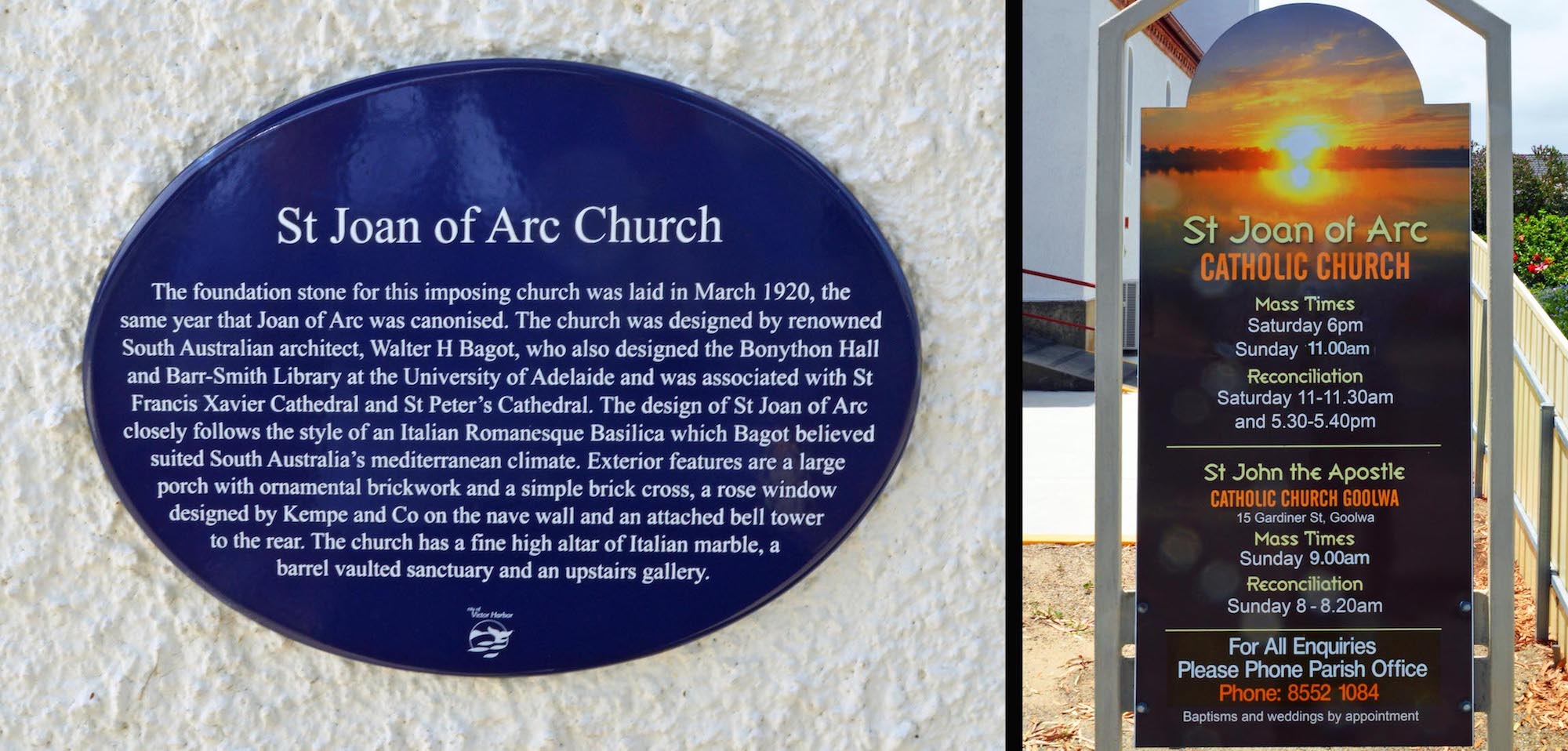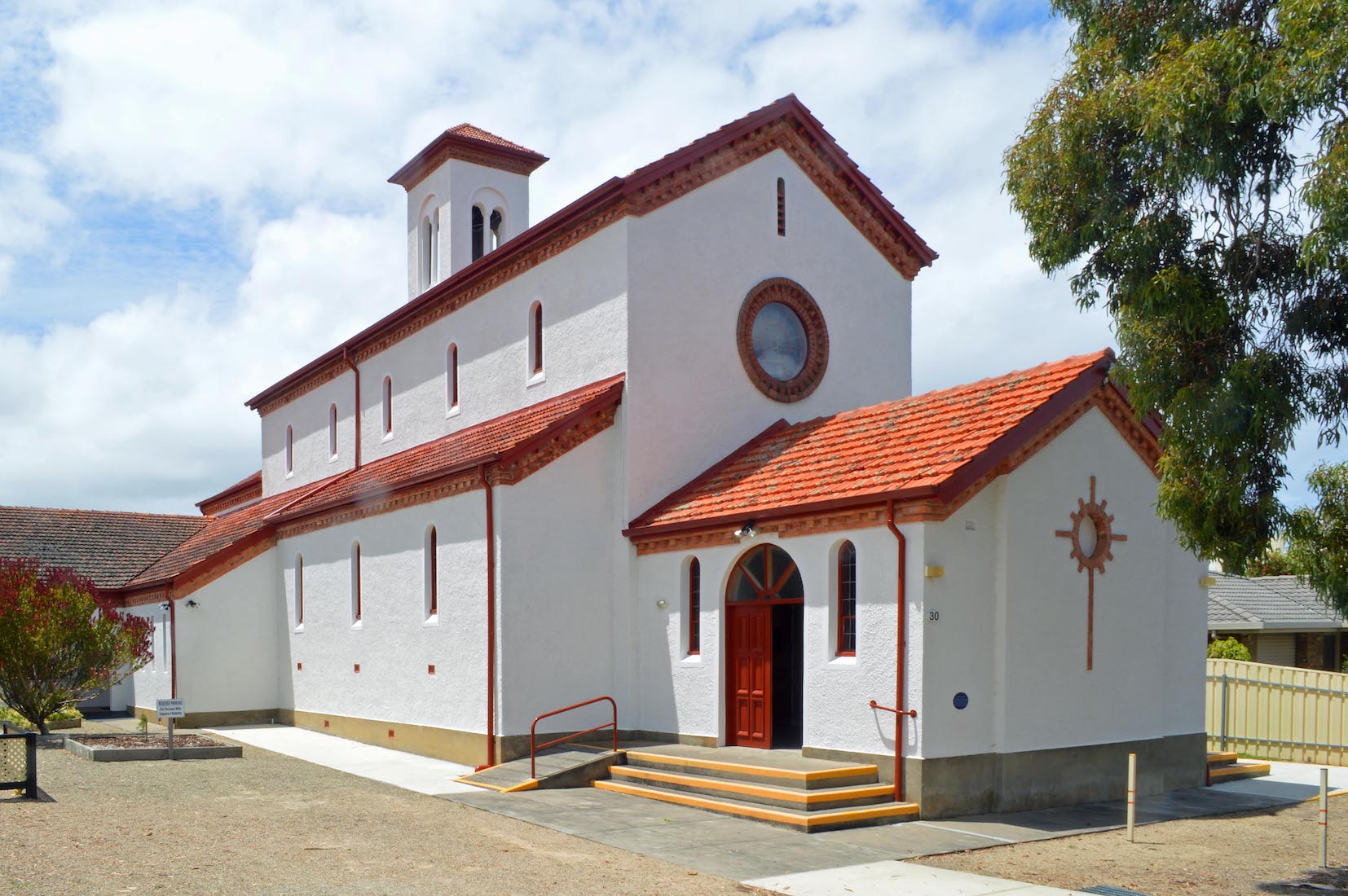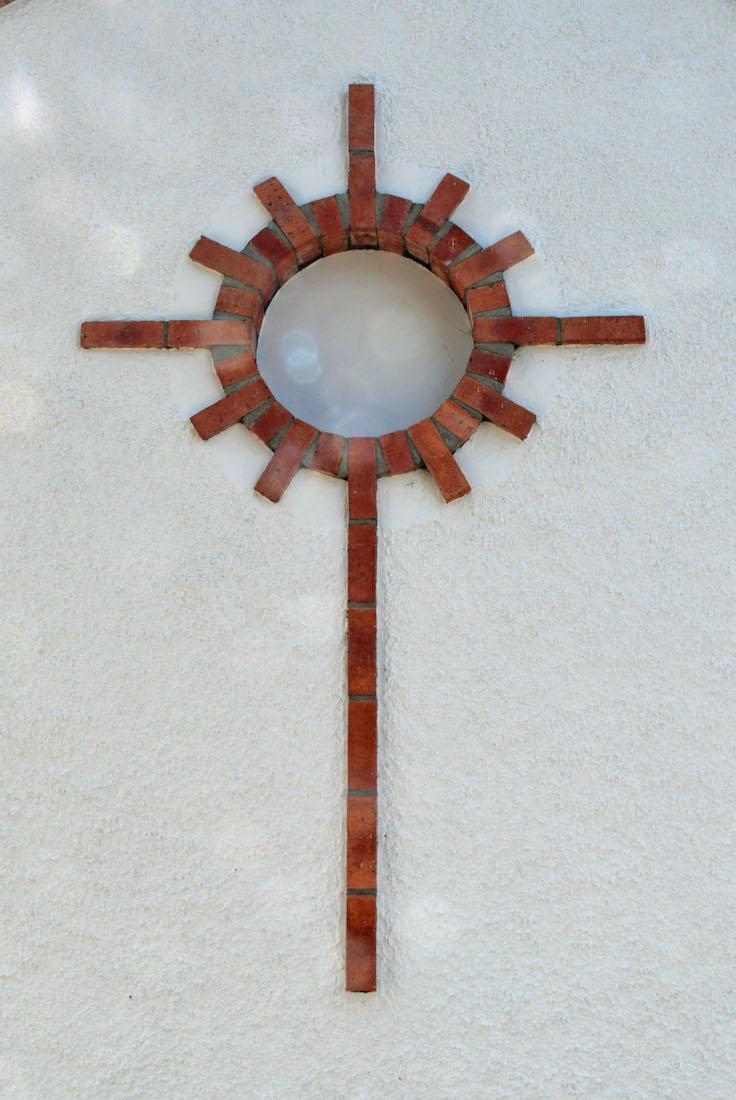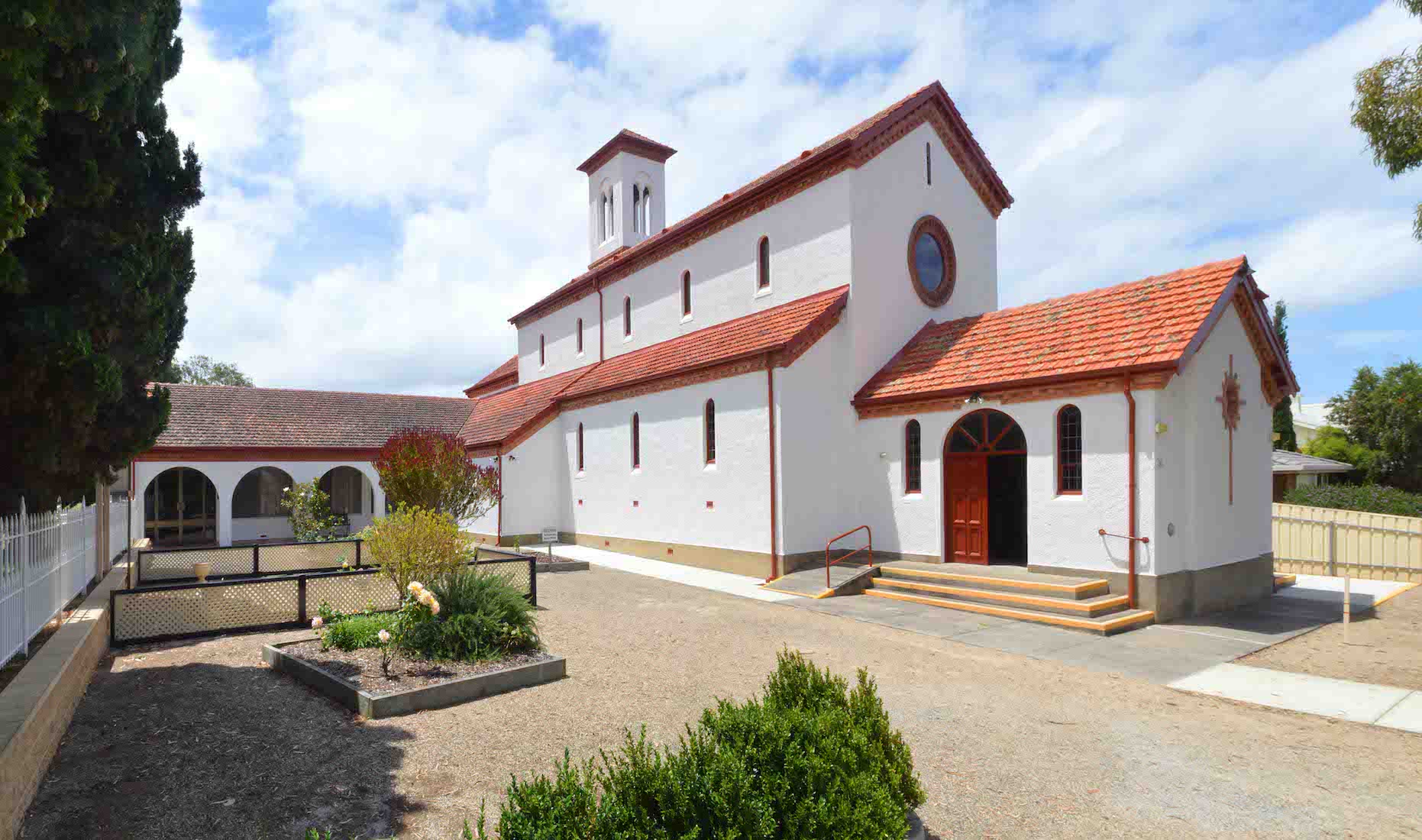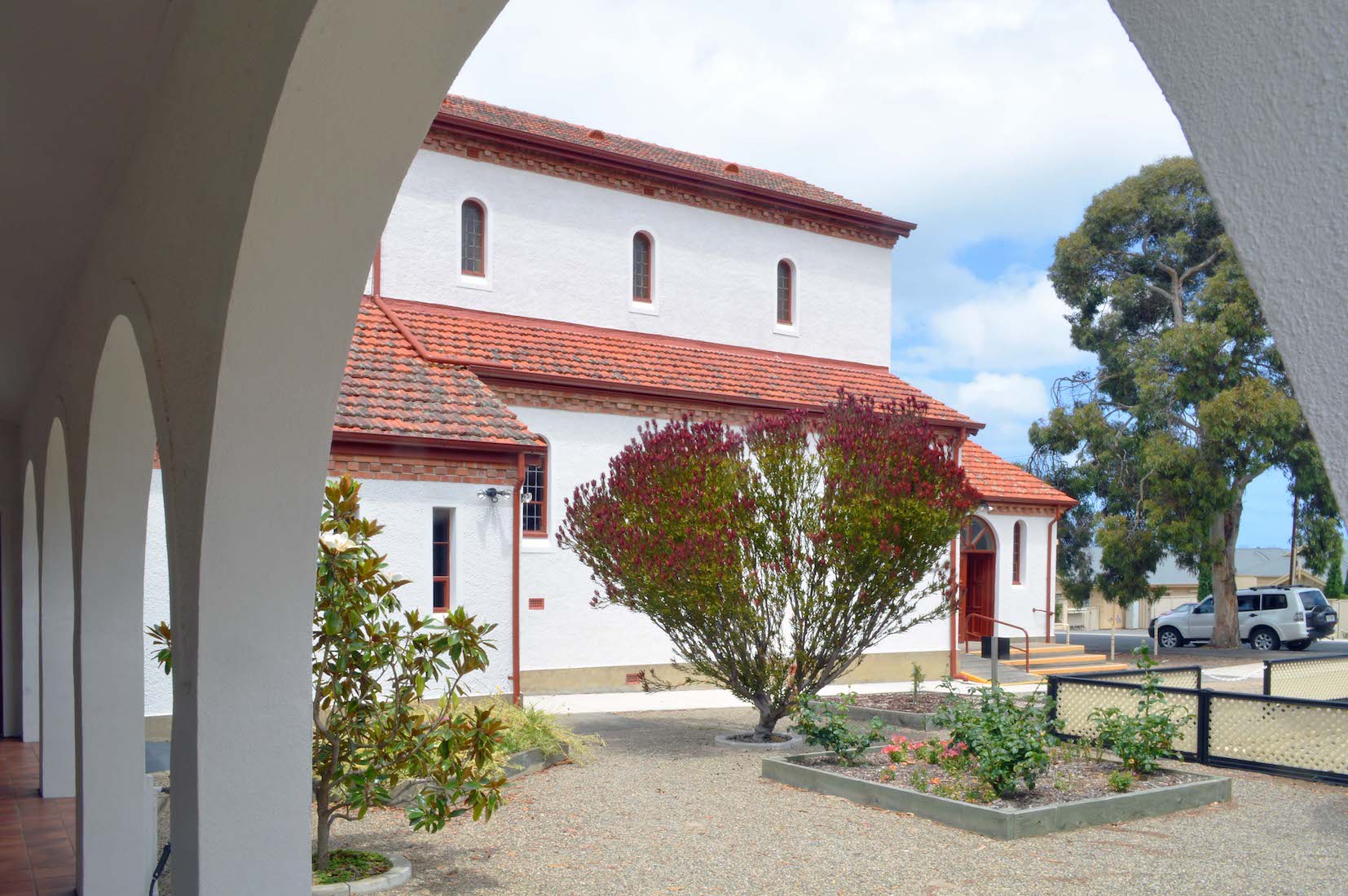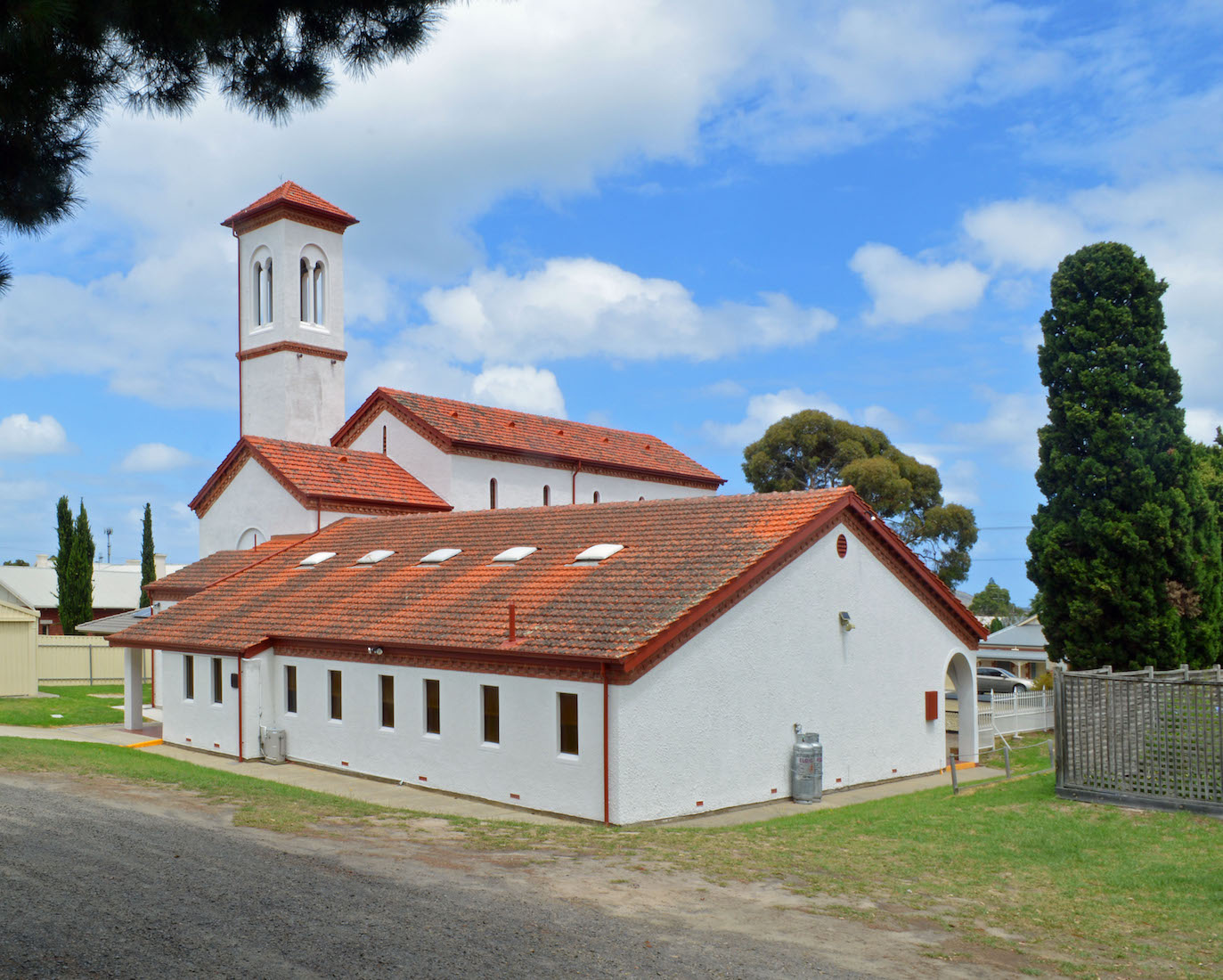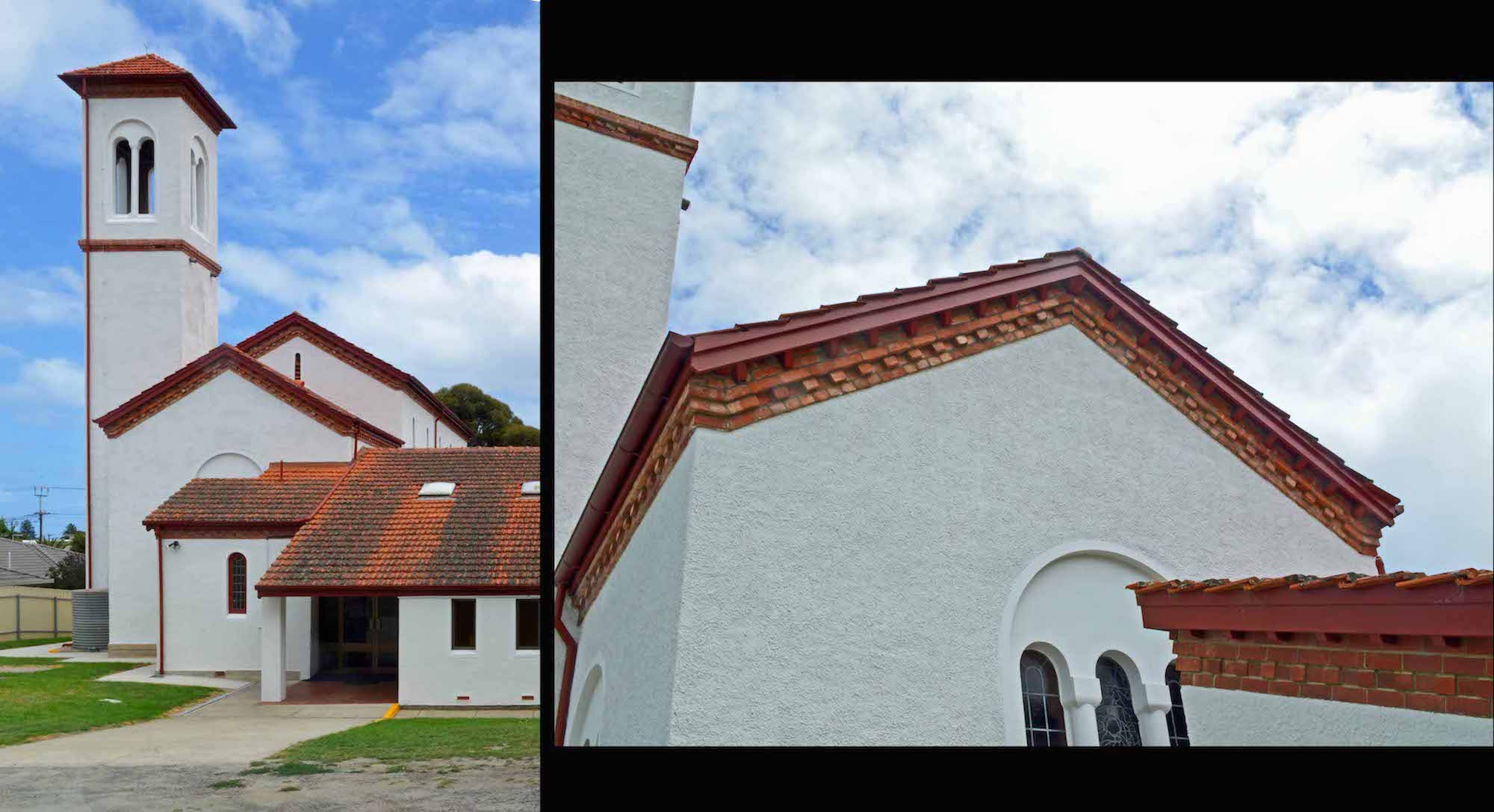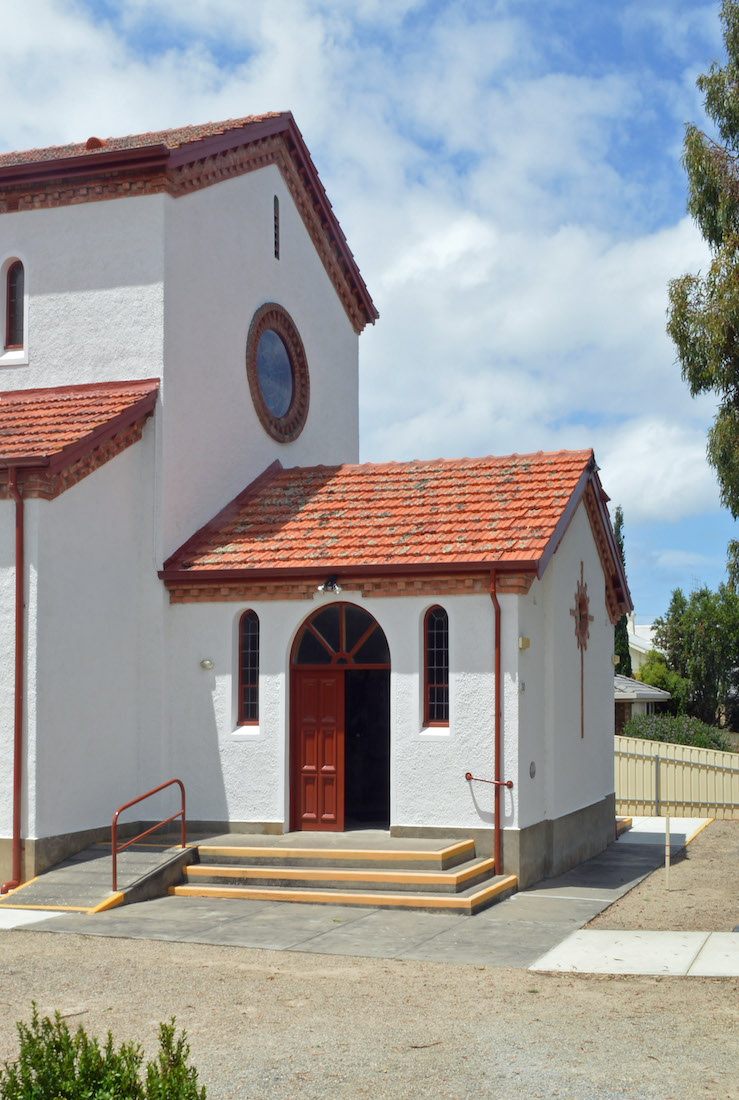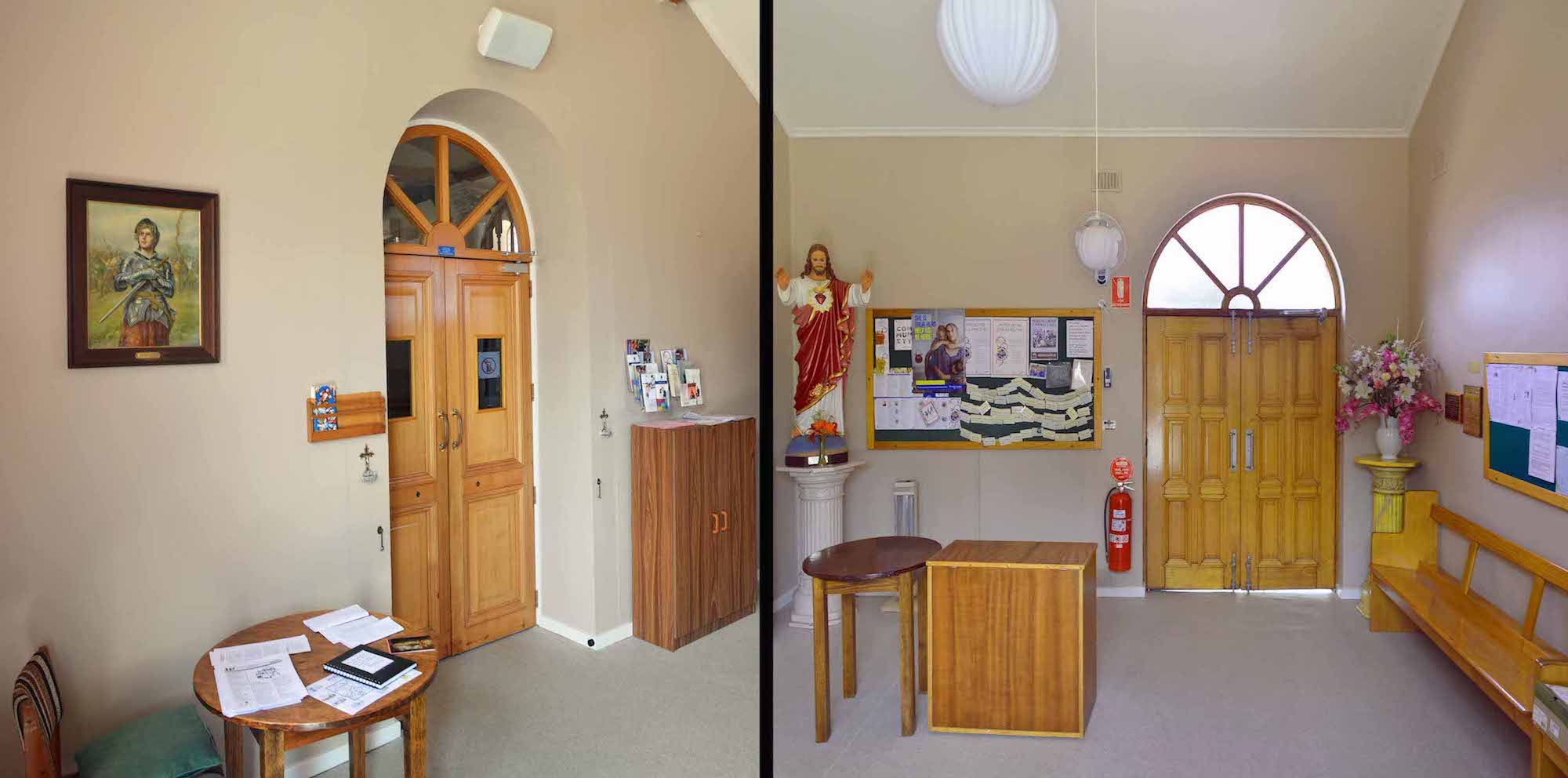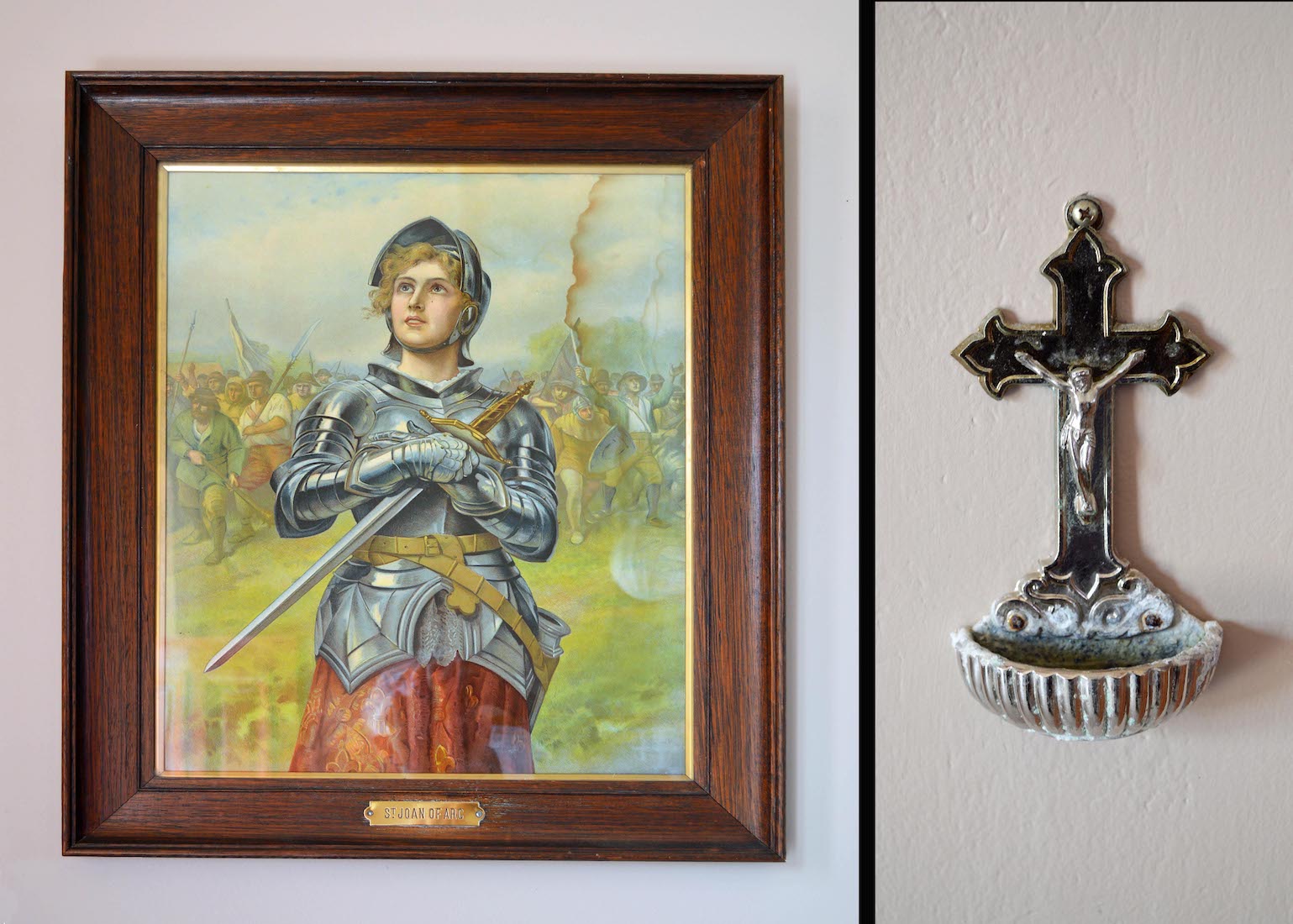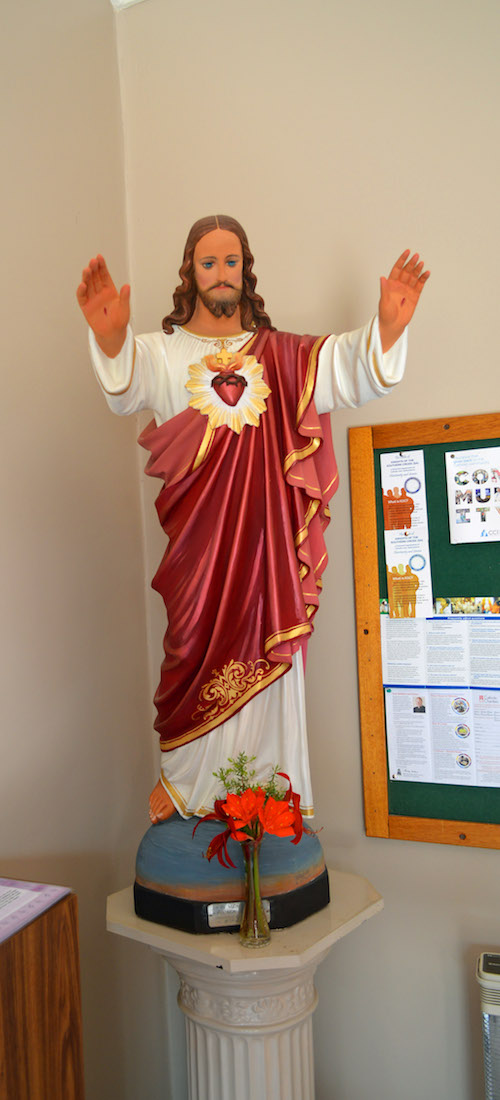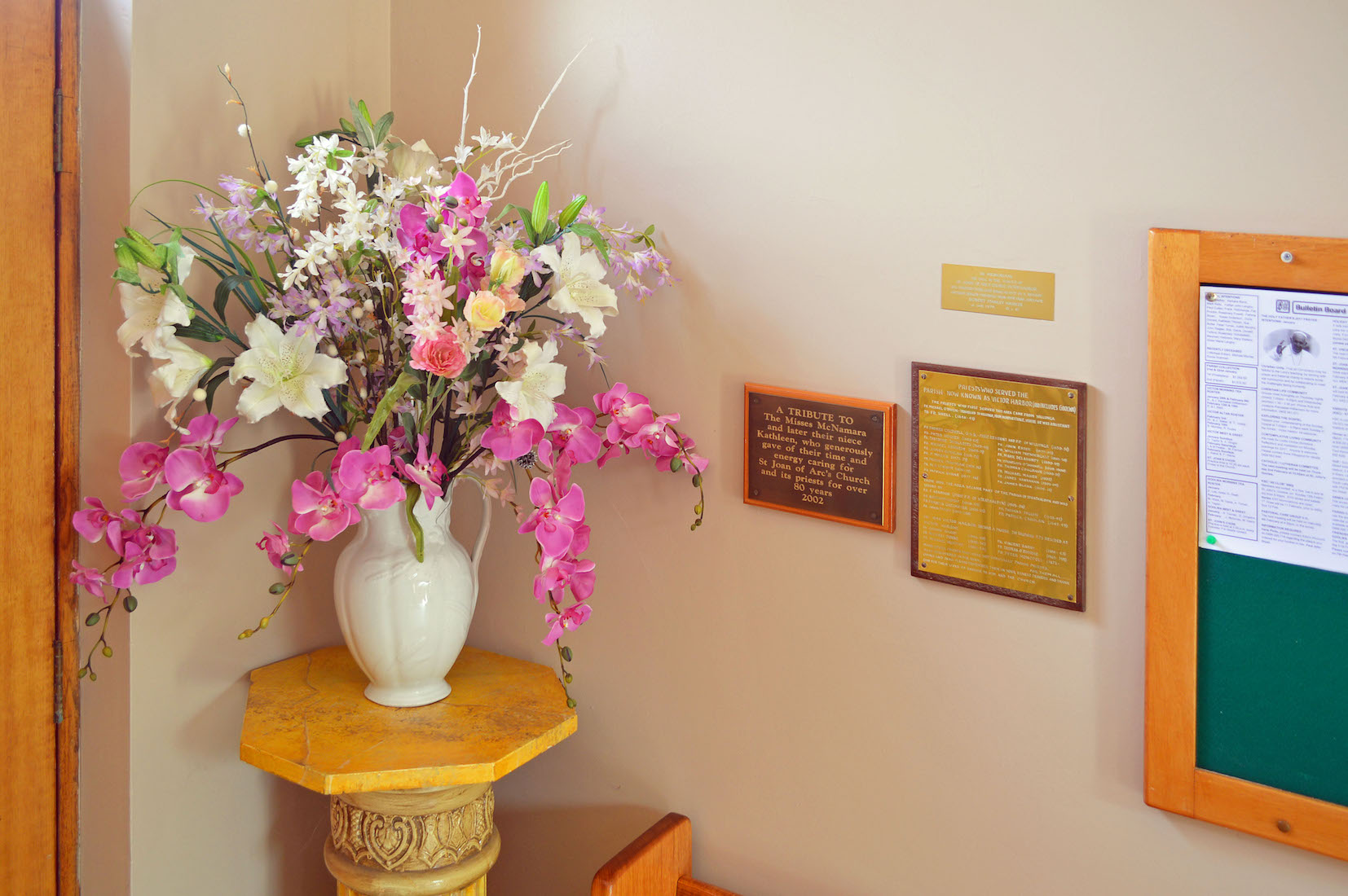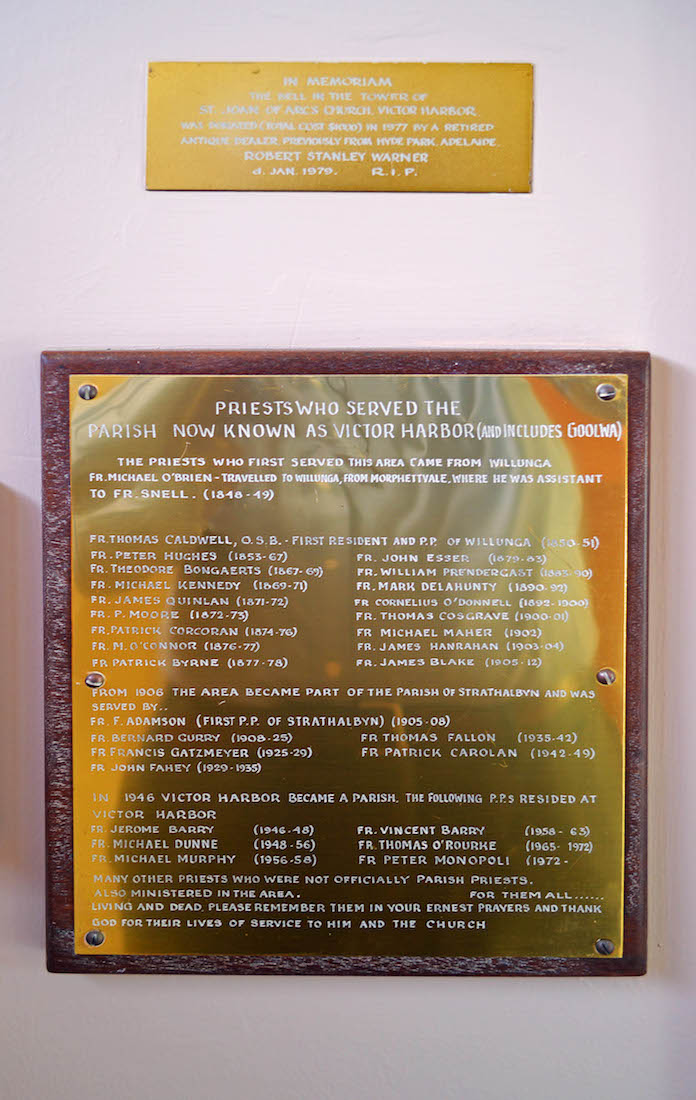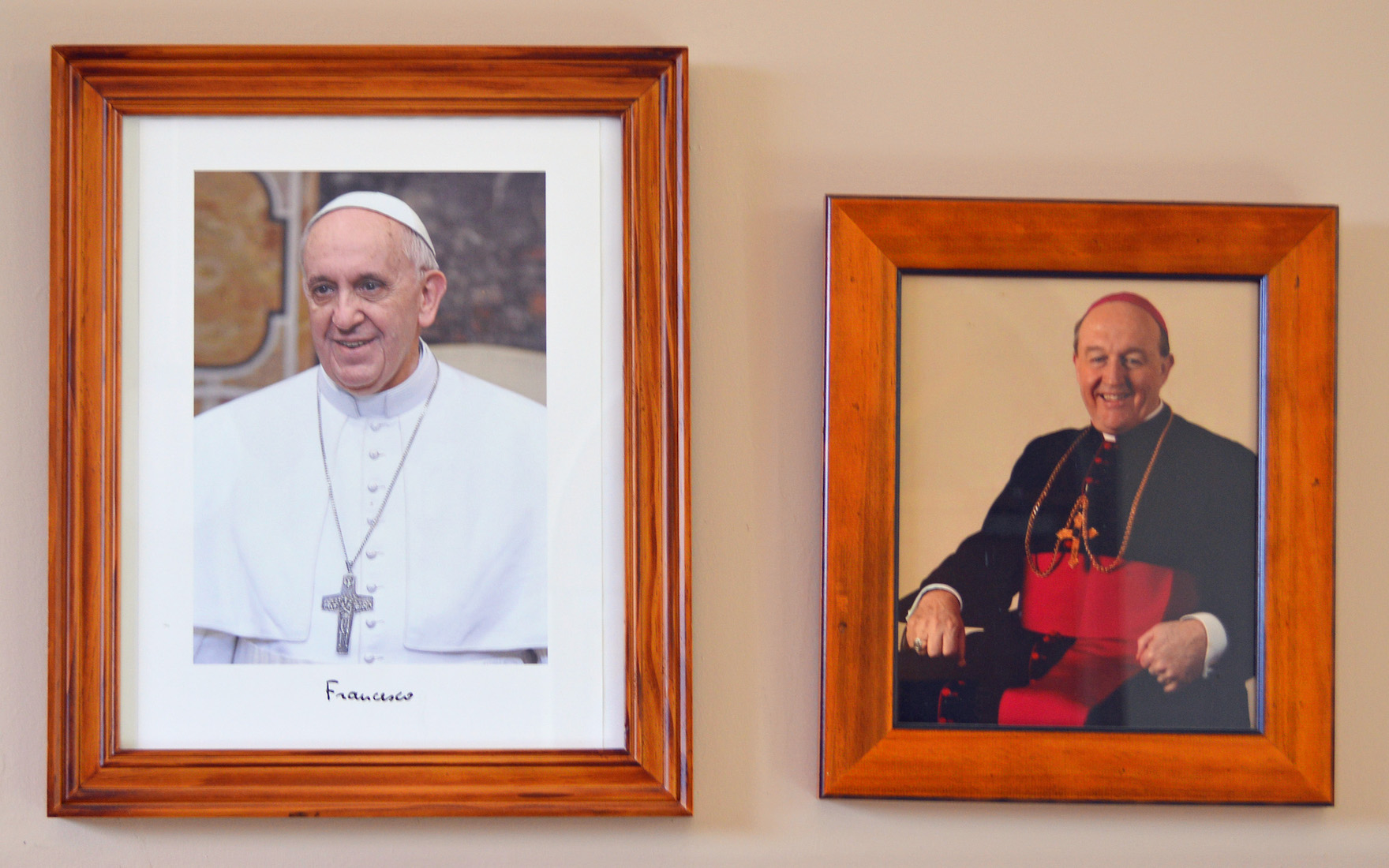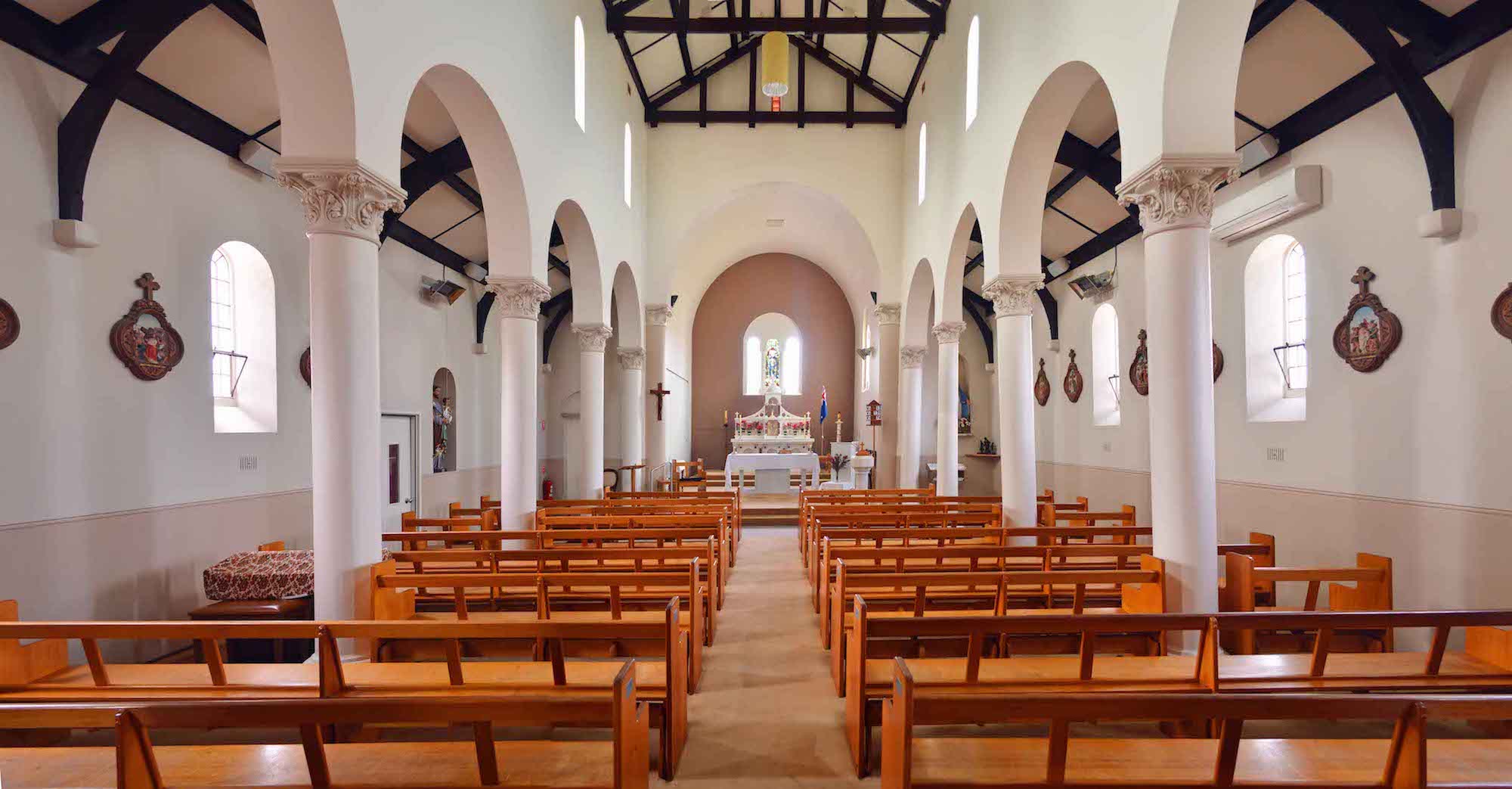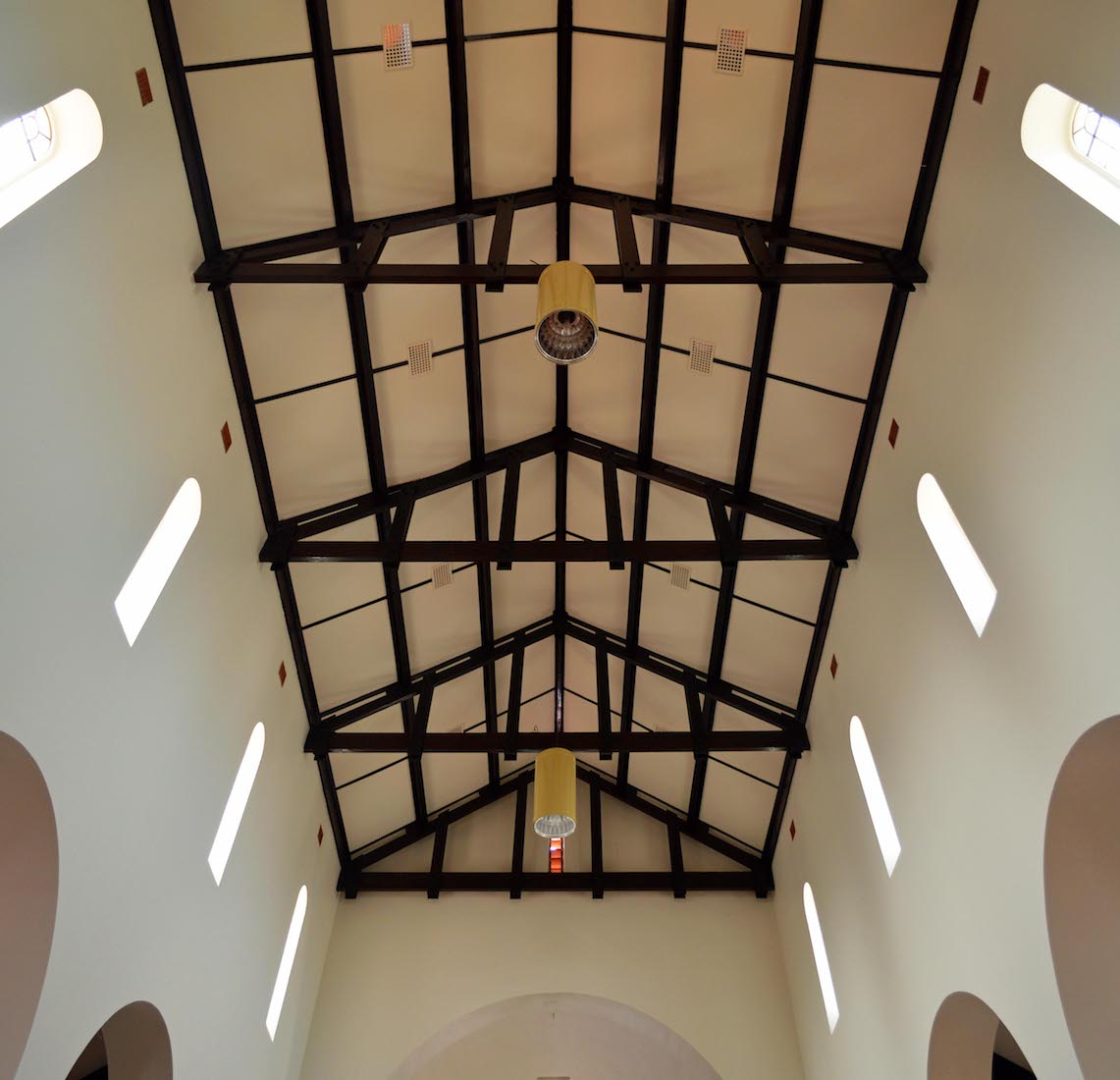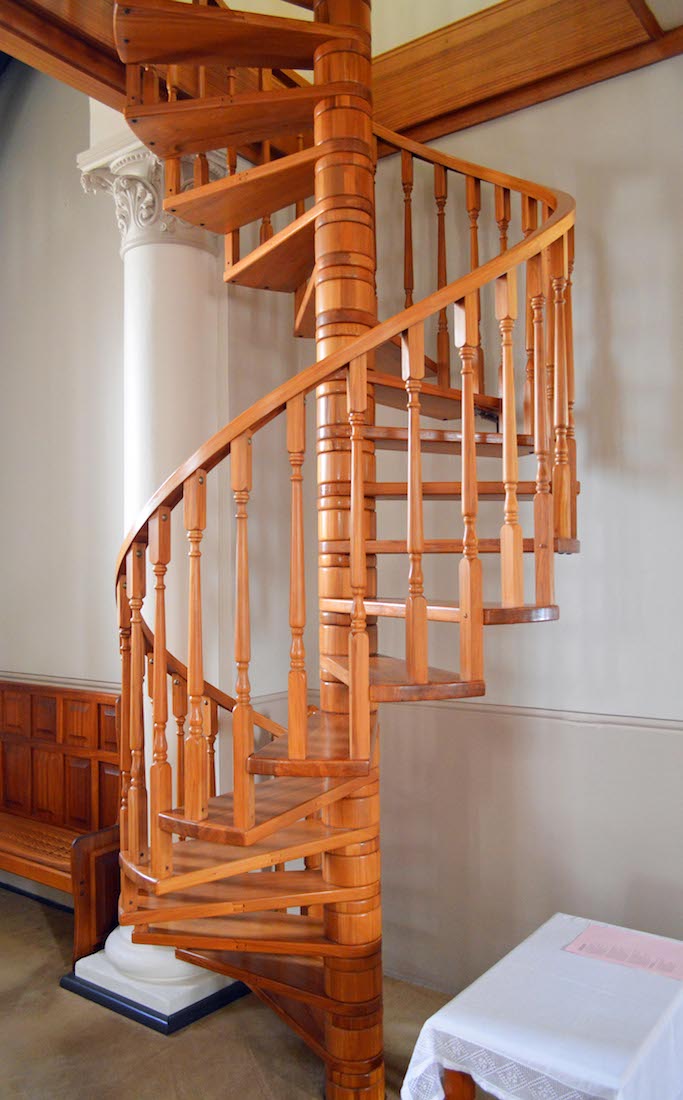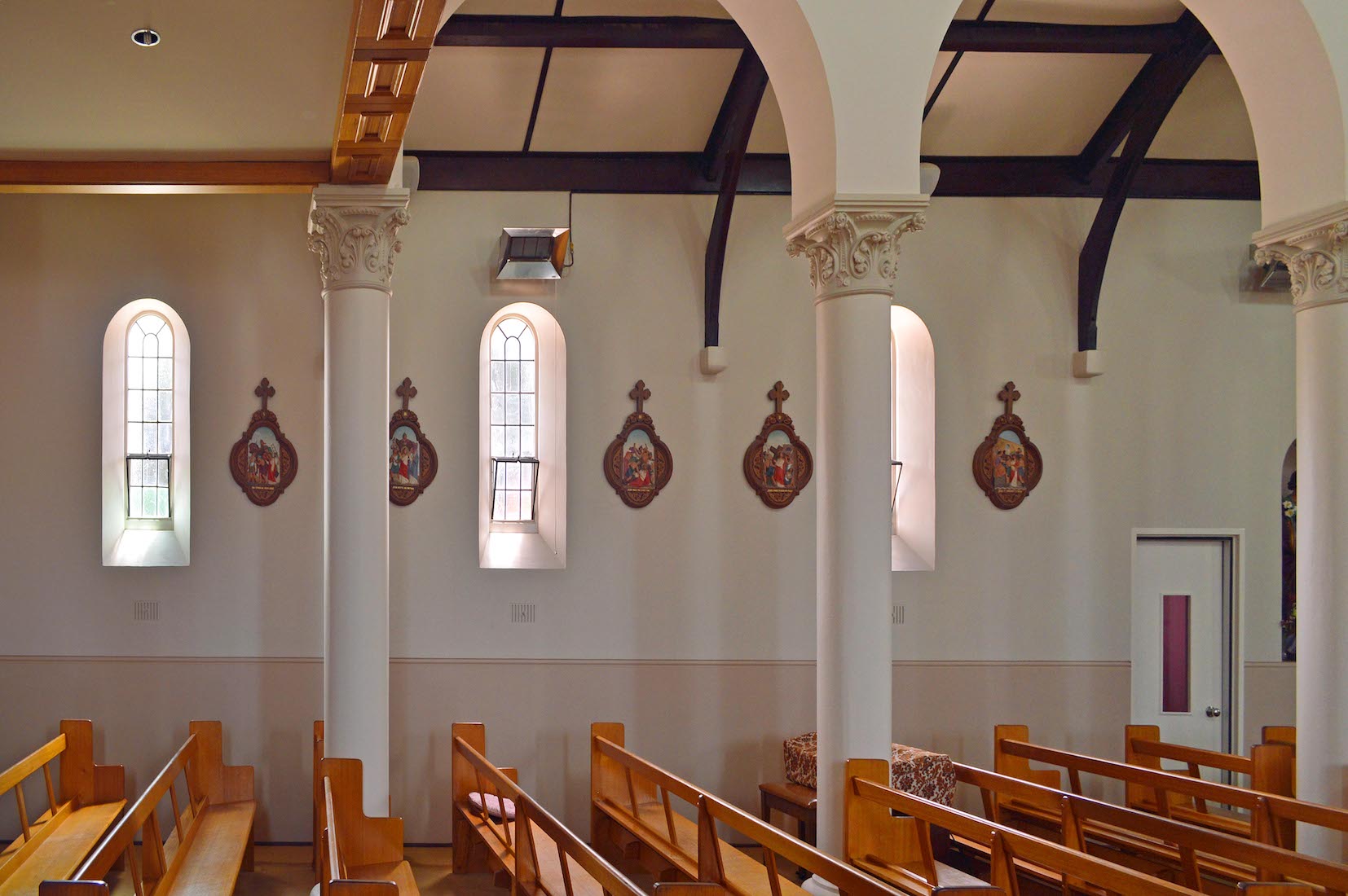1. ST JOAN OF ARC CATHOLIC CHURCH
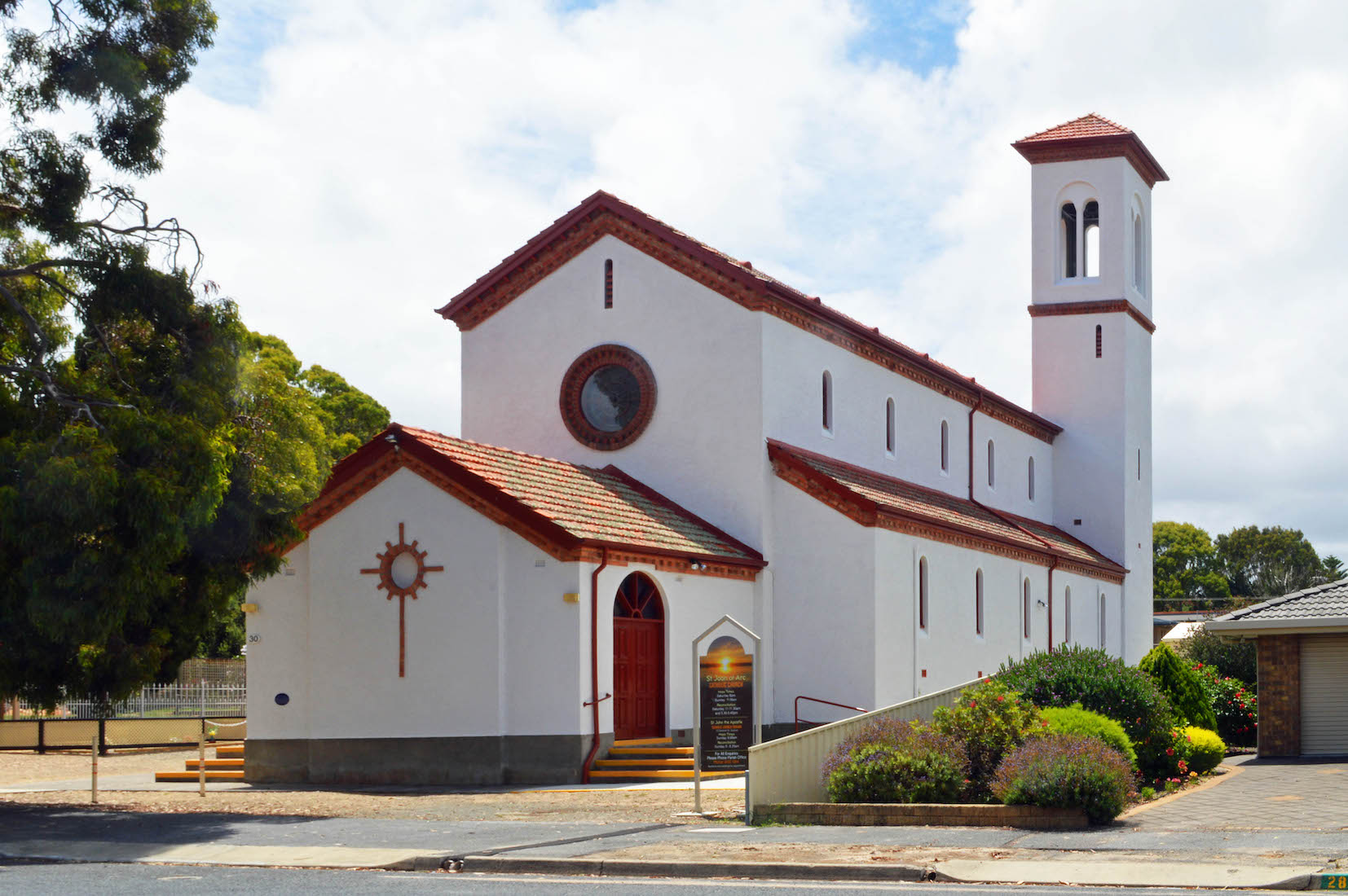
The St Joan of Arc Catholic Church can be found on Seaview Road, a short distance from the town centre. It is a very attractive building, but is easily missed by tourists. Like many Catholic churches it is often open for prayer and reflection. INDEX
2. SATELLITE VIEW
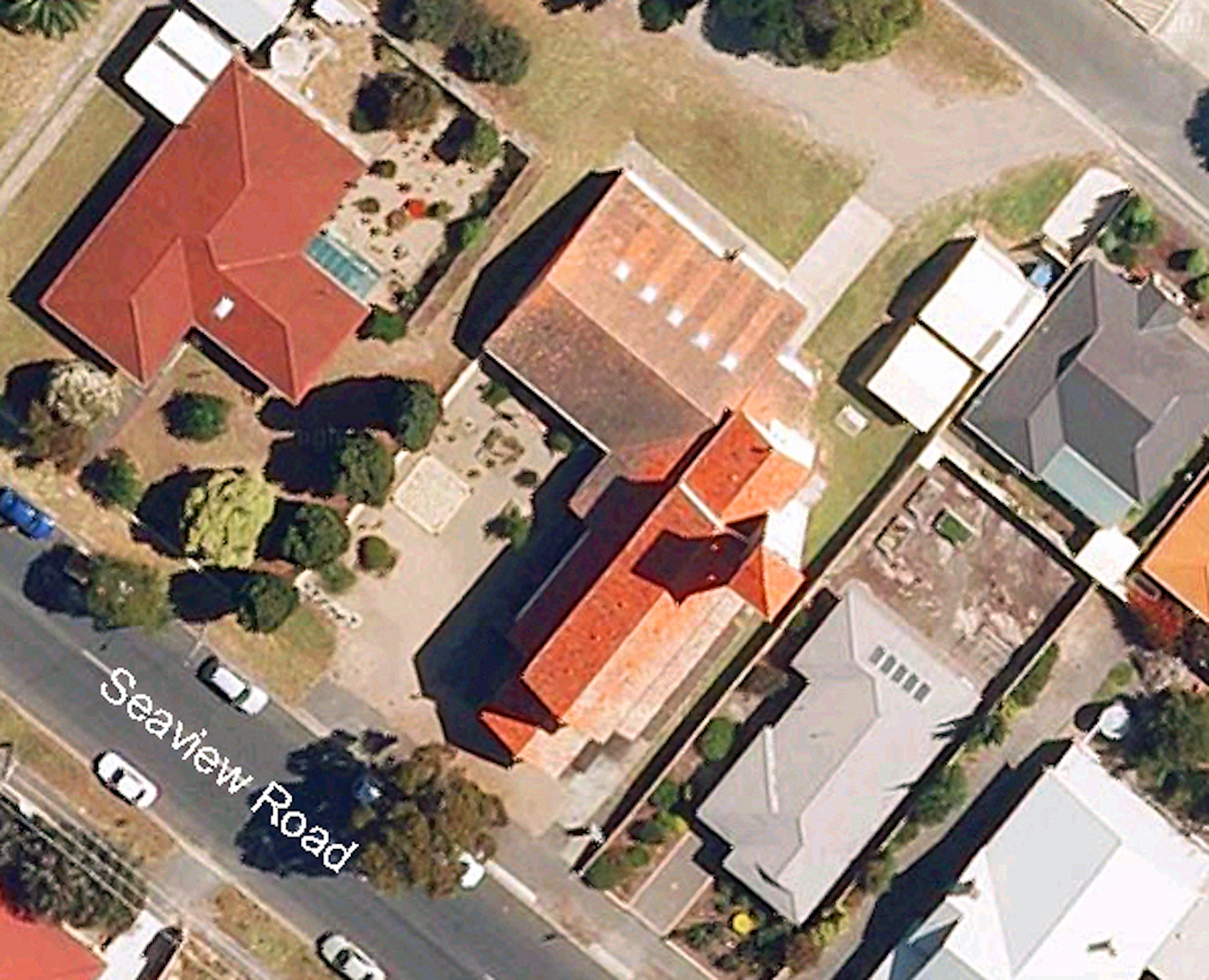
The satellite view shows the simple lay-out of the Church with an attached meeting hall at right angles at the rear, and the placing of the bell tower. The Church is placed with the sanctuary in a geographic north-east direction. We shall follow our custom and denote this liturgical East (with a capital letter).
3. CHURCH SIGNS
There are two signs at the front of the Church. The sign at right gives information about services. The other blue sign is one of a set of tourist information signs which give an excellent guide to visitors, along with helpful historical information.
4. NORTHWEST VIEW
The foundation stone was laid in 1920, which was the year in which St Joan of Arc was canonised. The Church was designed by renowned South Australian architect Walter H. Bagot. The Church design closely follows the style of an Italian Romanesque Basilica which Bagot believed suited Adelaide’s climate. The nave is 72 feet long and 36 feet wide.
5. CROSS
There is a large porch at the Western end of the Church, and the front wall is decorated by a simple brick Cross with an allusion to Celtic design. In fact the circle in the design is picked up in the Church sign, and again in the rose window higher up on the West wall of the nave.
6. CHURCH DESIGN
Behind the Western porch, the Church has a high rectangular nave with two lower covered side aisles. The clear windows are small and narrow, and rounded at the top. At the laying of the foundation stone, Archbishop Most Rev Dr Spence commented that this would be one of the finest buildings in VIctor Harbor, and how pleasing it was that many non-Catholics had contributed generously towards the building costs.
7. VIEW FROM THE HALL
Circumnavigating the Church, we come to the end of the hall with a view back through one of the sheltering arches. The hall is attached to the Church, and hall and Church bound a pleasant courtyard area.
8. NORTH EAST VIEW
There is a large open space to the East of the Church, and from here we can look down on the hall with the Church and tower behind. According to the Advertiser of 11 October 1927, the cost of the building was £5,000 ‘and although the local congregation numbers only about 40, all the liabilities, with the exception of about £8OO, have been wiped out’.
9. TOWER AND GABLE
From the East we can appreciate the simple lines of this building, the white roughcast walls, and the decorative border setting off the orange roof tiles. The tower rises sixty feet, making it easily visible above the neighbouring buildings.
11. FRONT PORCH
The front porch is surprisingly spacious. From left to right we notice a painting of St Joan of Arc, a small stoup, the entry to the Church, a statue of the Sacred Heart, two plaques on the right wall, and, in fact, just out of sight to the right, two further photographs.
12. PAINTING AND STOUP
The small stoup by the door is designed to hold holy water. Joan of Arc lived 1412 – 1431, and was nicknamed ‘The Maid of Orléans’. She is considered a heroine of France for her role during the Lancastrian phase of the Hundred Years’ War and was canonized as a Roman Catholic saint.
13. SACRED HEART
The devotion to the Sacred Heart is one of the most widely practiced and well-known Roman Catholic devotions, taking Jesus Christ’s physical heart as the representation of His divine love for humanity. This devotion is predominantly used in the Roman Catholic Church and among some high-church Anglicans and Lutherans. The devotion is especially concerned with what the Church deems to be the love and compassion of the heart of Christ towards humanity, and its long suffering.
14. PLAQUES
The brown plaque at left is a tribute to the Misses McNamara and later their niece Kathleen who gave of their time and energy caring for St Joan of Arc’s Church and its priests for over 80 years. The plaque is dated 2002.
15. BELL AND PRIESTS
The small plaque at top tells us that the single bell in the tower was donated in 1977 by Robert Stanley Warner. The plaque below lists the priests who served in this Parish and Church from 1853 onwards.
16. PHOTOGRAPHS
Above the notice board on the West wall of the porch are two photographs. At left is Pope Francis, born Jorge Mario Bergoglio, 17 December 1936. He is the 266th Pope. He chose Francis as his papal name in honor of Saint Francis of Assisi. Francis is the first Jesuit pope, the first from the Americas, the first from the Southern Hemisphere and the first Pope from outside Europe since the Syrian Gregory III, who reigned in the 8th century. At right is Philip Edward Wilson – the eighth Roman Catholic Archbishop of Adelaide from 2001 up tuntil his death in January 2021.
18. NAVE ROOF
The nave roof structure could not be more simple with its supporting triangular trusses. A small orange window penetrates the top of the far gable.
19. SPIRAL STAIRCASE
Right by the West door is an attractive light-timbered spiral staircase which gives access up to the balcony and the Church organ.
20. NORTH NAVE WALL
Stations of the Cross line the nave walls: curiously, only five on this side. In the early ’70s the chairs were replaced by pews. Each pew was given by a Church family, and an appropriate plaque was placed on the end of each pew to acknowledge this.


